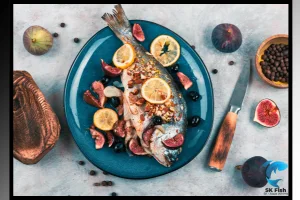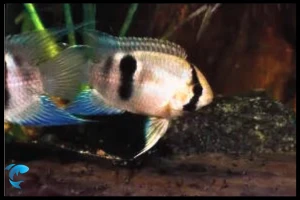Lyonsi Cichlid | Complete Aquarium Care Guide
Published: 1 Apr 2024
Welcome, aquarium enthusiasts! In this blog, we delve into the captivating world of Lyonsi cichlids. Known for their striking colors and fascinating behavior, these species have garnered popularity among aquarium enthusiasts.
How do you take care of Lyonsi cichlids in captivity? Look no further! All the essential care guides about this amazing freshwater creature are here. Let’s start to explore more.
What is Lyonsi Cichlids?
Lyonsi cichlids, scientifically known as Labidochromis sp. “Hongi” or Labodichromis hongi, belongs to the ray-finned family within the cichlid group. They are also part of the Mbuna group.
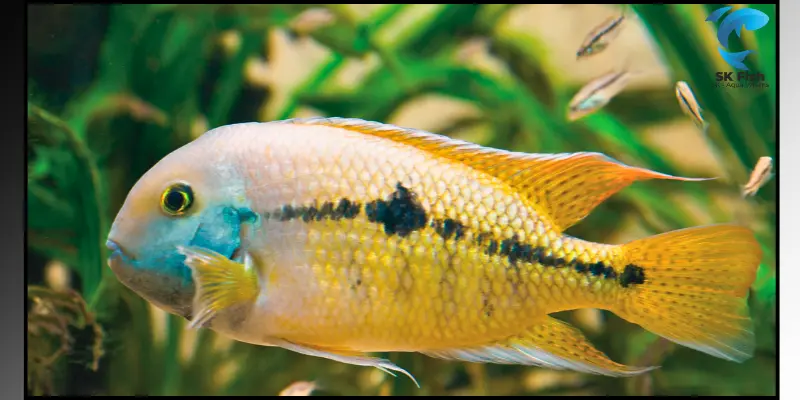
Common Names
Various names know Lyonsi cichlids some names are listed below:
- Cichlid Hongi
- Lyonsi Cichlid
- Electric Blue Cichlid
- Amphilophus Lyonsi
Size and Weight
The size and weight of lyonsi can vary depending on factors such as diet, care, and environment. On average, mature lyonsi typically grow to be between 4 to 10 inches in length and weigh around 2 to 3 ounces.
Lifespan and Reproduction
These amazing species typically have an average lifespan ranging from 5 to 8 years, influenced by diet, proper care, and environmental conditions.
In terms of reproduction, Amphilophus lyonsi are egg-laying species. During spawning, male lyonsi release sperm into the open water, while female lyonsi deposit their eggs on surfaces such as rocks or substrates. Male lyonsi then act as guards, protecting the eggs until they hatch, initiating the next phase of the reproductive process.
Lyonsi Cichlids Aquarium Care Guide
Proper care is vital for the well-being of any species. Below are some essential tips to ensure the health and happiness of your lyonsi in captivity.
Tank Size
Lyonsi cichlids exhibit territorial behavior and require ample space in the aquarium. A minimum tank size of 40 gallons is recommended for a small group of Amphilophus lyonsi cichlids. Ideally, you can accommodate 6 to 8 pairs in a 40-gallon tank.
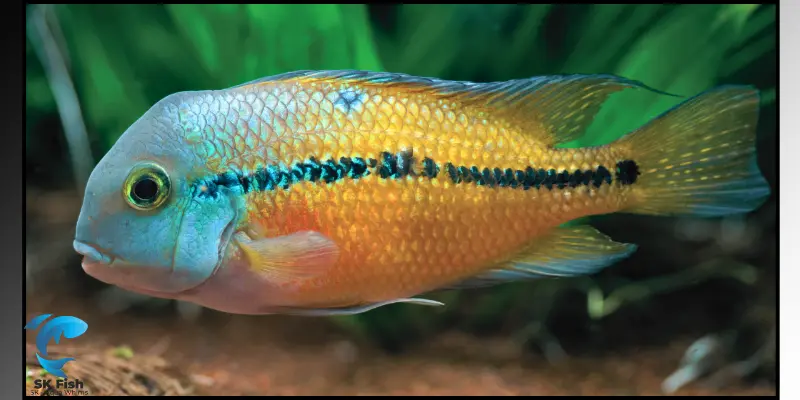
Tank Decor
Tank decoration plays a crucial role in the well-being and breeding success of lyonsi cichlids. These fish thrive in an environment that resembles their natural habitat. Utilizing live rocks, caves, and driftwood can help mimic their native surroundings and promote their overall health and breeding behavior.
Water Parameters
Cichlids thrive in slightly alkaline water conditions, with a pH ranging from 7.5 to 8.5, and a temperature between 74 to 82 degrees Fahrenheit. Regular water testing is essential to monitor parameters such as ammonia and nitrate levels. To maintain water quality, consider using a canister or sump filter, especially for larger tanks, to effectively remove impurities and ensure a healthy environment for your Amphilophus lyonsi.
Tank Mates
Choosing suitable tank mates is essential for the well-being of Amphilophus lyonsi cichlids. Opt for species that are compatible in terms of size and temperament. Generally, small cichlids like convict, cobalt, and zebra cichlids make good companions for lyonsi cichlids. Ensuring compatibility among tank mates helps promote a harmonious environment in the aquarium.
Feeding and Diet for Lyonsi Cichlids
As omnivores, lyonsi cichlids thrive on a diet that includes a variety of high-quality foods. Offering a balanced diet rich in nutrients is essential for promoting the overall health and well-being of these fish.
- High-quality pellets or flakes
- Frozen or live foods like bloodworms, brine shrimp, or daphnia.
- Vegetable matter like zucchini, cucumber, or spinach
To maintain the health of Amphilophus lyonsi cichlids, it’s crucial to avoid overfeeding. Instead, feed them multiple times a day with small amounts of food. Additionally, promptly remove any uneaten food to prevent it from decomposing and affecting water quality.
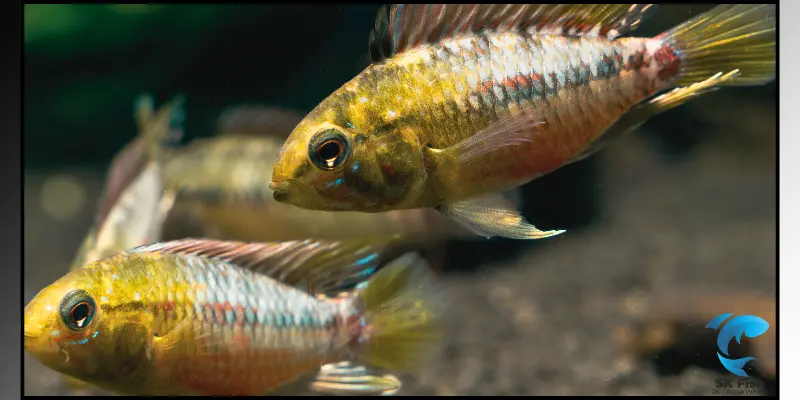
Common Health Issues
Like all fish species, lyonsi cichlids are susceptible to certain health issues, particularly when their care requirements are not adequately met. Common diseases that lyonsi cichlids may experience include [list diseases here].
| Common Disease Names |
|---|
|
Conclusion
In this comprehensive blog post, we delved into the fascinating world of lyonsi cichlids, covering a wide range of essential aspects. From exploring their various names and sizes to understanding their lifespans, reproduction systems, and key considerations for aquarium setup, we left no stone unturned. Additionally, we examined their feeding patterns and common health issues, providing valuable insights for aquarium enthusiasts. We hope you found this information enriching and insightful. Feel free to share your feedback in the comment section below.
FAQs
How big do Amphilophus lyonsi get?
Amphilophus lyonsi, commonly referred to as lyonsi cichlids, typically reach sizes ranging from 5 to 10 inches. However, the actual size can vary based on factors such as the age of the species, diet, care provided, and environmental conditions.
Are Amphilophus lyonsi aggressive?
Amphilophus lyonsi are known for their aggressive behavior, particularly when confined to smaller aquariums. However, in larger tanks where they have ample space to establish territories, their aggression tends to be less pronounced.
Which one is the most friendly cichlid?
While some cichlid species exhibit aggression, others are notably peaceful and compatible with various tank mates. Examples include the German Blue Ram Cichlid, Firemouth Cichlid, Keyhole Cichlid, and Convict Cichlid, which generally display calm behavior and can coexist harmoniously in community tanks.

SK Fish is your trusted source for practical fish care tips and delicious seafood recipes. Our team is dedicated to providing reliable, well-researched content for fishing enthusiasts and home cooks alike.

- Be Respectful
- Stay Relevant
- Stay Positive
- True Feedback
- Encourage Discussion
- Avoid Spamming
- No Fake News
- Don't Copy-Paste
- No Personal Attacks



- Be Respectful
- Stay Relevant
- Stay Positive
- True Feedback
- Encourage Discussion
- Avoid Spamming
- No Fake News
- Don't Copy-Paste
- No Personal Attacks
